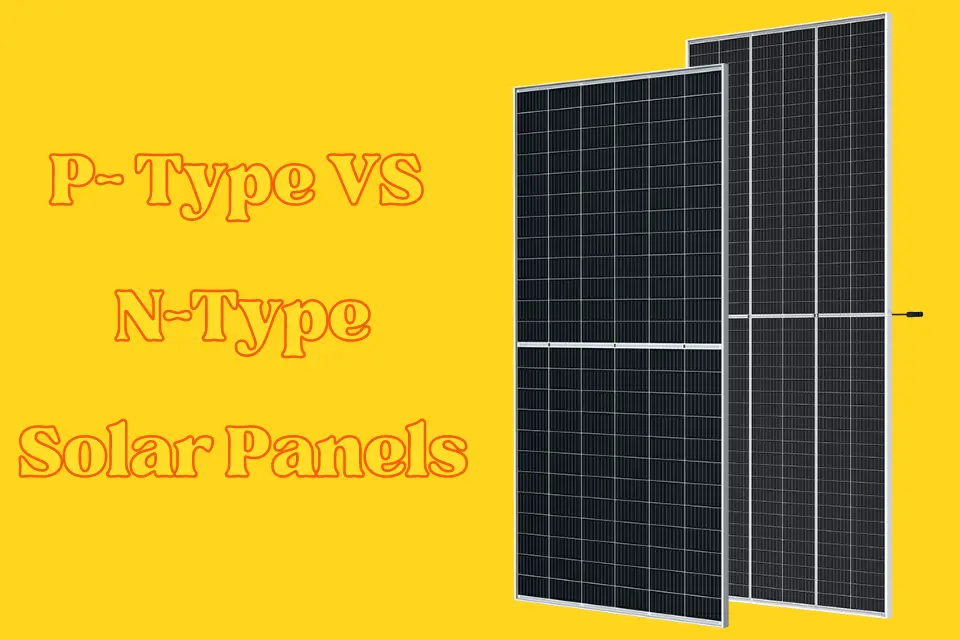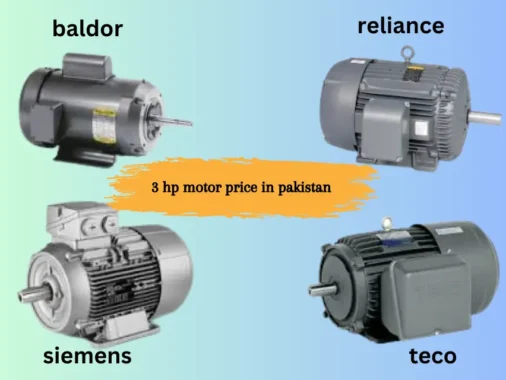The shift to a sustainable future is being spearheaded by solar energy, which has emerged as a top renewable energy source. As P- Type solar panel VS N-Type Solar Panels.Technological developments in solar cell technologies have created new opportunities for improved performance and efficiency as the market for solar panels keeps expanding.
A more and more common solution for homeowners looking to lower their energy costs and build a more self-sufficient home is solar energy. There are two types of solar panels that you can choose from when you first start researching solar energy systems. N-type and p-type panels are two examples of these. N-type and P-type solar panels have attracted a lot of interest in these technologies.
Understanding the differences between the two will enable you to choose the option that best suits your needs, both financially and otherwise. We will perform a thorough comparison of P- Type VS N-Type Solar Panels in this article. Analyzing their properties, benefits, and uses, with an emphasis on improving photovoltaic (PV) efficiency.
Knowing About P- Type VS N-Type Solar Panels
The terms N-type and P-type solar panels relate to the various semiconductor material types that are utilized to create solar cells. In the case of N-Type and P-Type materials, the letters “N” and “P” stand for the predominant electric charge carriers, which are negative (electron) and positive (holes), respectively.
N-Type Solar Panels
The phosphorus doping of the wafer in an n-type solar panel results in a negative charge in the bulk c-si region. Its boron doping makes its top emitter layer negatively charged. The main benefit of N-type solar panel—which are beginning to gain popularity—is that they do not suffer from light-induced degradation, unlike P-type solar panels, which have been found to do so. These N-type solar panels have a longer lifespan and can be used in any construction. They are more expensive than traditional P-type panels, though.
P-Type Solar Panels
P-type solar panels feature a noticeable bulk c-si region that has been doped with boron, making it negatively charged. Phosphorus doping results in a positively charged top emitter layer. In the market today, P-type solar panels are more common than N-type solar panel.
It is assumed to be because p-type solar cells have undergone more research, are more commonly used in space applications, and are more radiation resistant than n-type panels. P-type panels are usually more affordable for the typical homeowner because of their widespread availability. Actually, Chint Global offers the AstroSemi and AstroTwins.rriers, which are the two primary P-type panels.
Comparison of N-Type Vs P-Type Solar Panels:
1. Performance and Efficiency
When compared to P-type solar panels, N-type solar panels have been shown to be more efficient. By using N-type materials, recombination losses are less likely to occur, which improves charge carrier mobility and lowers energy loss. This improved performance results in more power output and more potential energy generation.
2. Degradation Induced by Light (LID):
When compared to P-type panels, N-type solar panels are less vulnerable to Light Induced Degradation (LID). The brief drop in efficiency that is seen in the first few days following the installation of solar cells is referred to as LID. N-Type panels’ lower LID guarantees longer-term performance that is more consistent and dependable.
3. Production and Costs:
Because P-type solar panels are less expensive to manufacture, they have historically dominated the market. However, as manufacturing methods have become more efficient and economies of scale have grown, the price gap between P-Type and N-Type panels has been closing.
Furthermore, N-Type panels’ potential for greater performance and efficiency could eventually outweigh their initial higher costs.
4. The efficiency of temperature:
As temperatures rise, the efficiency of both N-Type and P-Type panels decreases. But N-type panels typically have a lower temperature coefficient, which means that when the temperature rises, their efficiency declines less sharply. Because of this feature, N-Type panels are better suited for areas with hotter temperatures.
Applications and Prospects for the Future
1. Installations for Homes and Businesses:
In both residential and commercial installations, N-type and P-type solar panels are used. P-Type panels are very popular because of their well-established market presence and affordability. Nonetheless, N-type panel installations are on the rise due to the growing demand for greater power generation and efficiency, especially in markets where quality and performance are more important than initial costs.
2. Research and Technological Advancements:
The goal of ongoing research and development is to increase N-Type solar panels’ efficiency even more.
The use of N-type technology in tandem solar cells holds the potential for even higher efficiency increases. The solar industry, manufacturers, and research institutions are working together to drive technological advancements that will enable N-type solar panels to reach their full potential.
3. Large- and utility-scale projects:
Utility-scale and large-scale solar projects are increasingly adopting N-type panels because of their improved efficiency and potential for higher energy generation. Because of their superior performance, N-type solar panels are a preferred option for large-scale solar installations looking to maximize power output and optimize returns on investment.
The verdict
With their benefits and uses, N-type and P-type solar panels are two different approaches to solar cell technology. Although P-type panels have historically dominated the market, N-type panels are a compelling option for achieving increased PV efficiency because they have lower temperature coefficients, reduced LID, and higher efficiency.
N-type solar panels are becoming more and more popular as the market dynamics change due to the growing demand for higher-performing solar panels. The cost difference between N-Type and P-Type solar panels is getting smaller as a result of continuous research, economies of scale, and technological developments, making the adoption of N-Type technology more and more feasible.
In the end, project requirements such as performance expectations, cost considerations, and geographic factors will determine which N-Type or P-Type solar panel to use. N-type technology is an exciting new development in solar energy that has the potential to significantly advance the production of sustainable and efficient solar power in the future.






